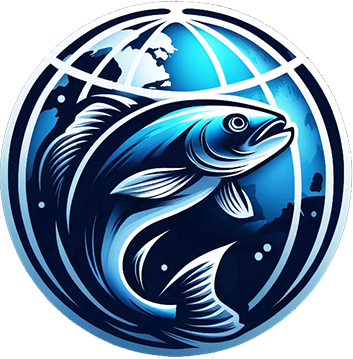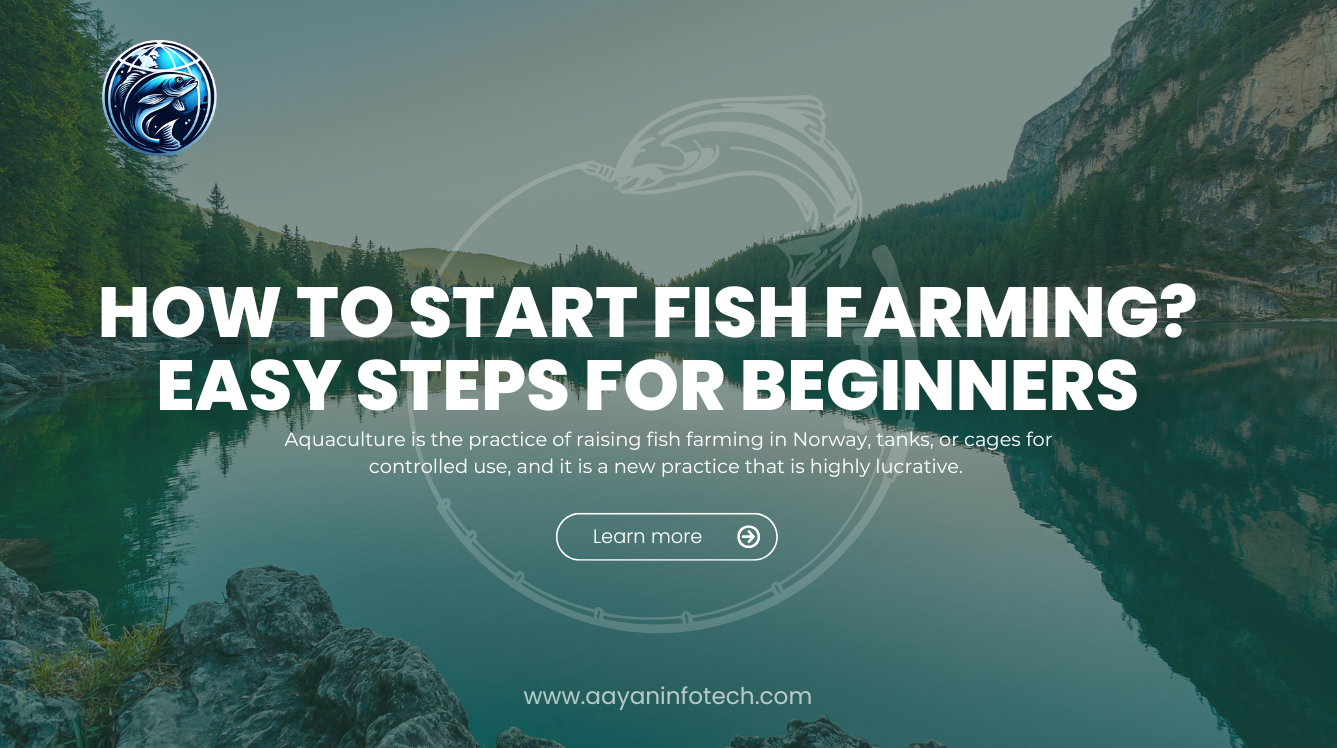Aquaculture is the practice of raising fish farming in Norway, tanks, or cages for controlled use, and it is a new practice that is highly lucrative. The procedure looks like it will take off much because of the fact that there are other ways of bringing seafood to millions while promoting sustainability at profiling very similar interest rates. Aquaculture provides a steady source of better protein through the walled and controlled environment and at the same time creates jobs and resources for economies in communities. Fish farming by means of appropriate planning, resources, and knowledge is a great opportunity for the amateurs in businesses.
What is Fish Farming?
Aquaculture is the science of raising fish or fish farming in confined areas like ponds, tanks, cages. It is used to meet the high demand for fish and seafood while reducing the pressure on wild fish populations. Through aquaculture, an ideal condition is set for fish to grow well for continuous and good-quality production. The commonly cultured species are tilapia, catfish, salmon, and carp on the basis of rapid growth and adaptability. It is a sustainable source of food production, enhancing food security and also acts as a source of income for many individuals and communities.
Types of Fish Farming
Fish farming can be classified into different categories according to the type of environment and method of cultivation. Most common types of fish farming are extensive fish farming in which fish grow within natural water bodies with little external human interference and intensive fish farming in which fish are raised in high-density systems that are then treated with their feed and monitoring. Another type is semi-intensive farming, wherein natural and artificial inputs are modulated for moderate fish production. Further, cage farming entails putting up enclosures in lakes, rivers, or seas for raising fish within their natural habitat while recirculating aquaculture systems (RAS) grow fish in tanks with recycling of water using advanced technology.
Fish farming involves various methods, each suited to specific environments and objectives. Here are the main types:
- Extensive Fish Farming:
This is a system of keeping fish in natural waters by using ponds or lakes. Minimal human effort is involved while fish depend mostly on naturally available food. Economical but less productive is this system. - Intensive Fish Farming:
This is where fish reared at high density under controlled environment with food artificial and oxygen supply for best growth. This requires huge investment, however, yield produced is highest. - Semi-Intensive Fish Farming:
This is a combination of extensive and intensive farming since both natural and supplementary feed are utilized in production. Cost and yield effectiveness are balanced. - Cage Farming:
Cages or nets are set under natural water bodies such as rivers, lakes, or oceans. This will enhance the letting of natural water flow, yet will control fish environment. - Recirculating Aquaculture Systems (RAS):
Advanced indoor method: RAS is about keeping fish in tanks in which water is treated and recycled. Best for those areas that do not have much water and requires maximum accurate control of fish growth conditions.
How to Start Fish Farming
Starting a fish farming business requires careful planning, preparation, and a step-by-step approach to ensure success. Here’s how you can get started:
1. Conduct Research
There are a few steps you would need to take to learn the fundamentals of aquaculture-you would need to understand the types of fish suitable for farming, their growth requirements, and the market demand. Species like tilapia, catfish, or carp are preferred for farming; they are easy to start with.
2. Choose a Suitable Location
Find a place where there would be assured water supply, good soil for pond construction, and sunlight. Ensure you comply with site requirements in the local regulations and environmental standards.
3. Decide on a Farming Method
Choose an appropriate culture system according to your availability of resources and experience. Then, make your selection from pond systems, cage farming, or RAS (recirculating aquaculture systems), with each of their varying infrastructures and maintenance requirements.
4. Build Infrastructure
Prepare the farm by constructing ponds, tanks, or cages. Install all the necessary equipment: aerators, filtration system, feeders, etc. to keep the fish healthy.
5. Source Quality Fingerlings
Source stocks from reputable suppliers that are free from any form of disease. Ensure they fit into the farmer’s choice of farming practices.
6. Manage Water Quality
Regular monitoring of water parameters like pH, temperature, and oxygen levels should be practiced. Water quality is crucial for adequate survival and growth of fish.
7. Develop a Feeding Plan
Feed regularly with the best possible nutrients at the most appropriate times. Overfeeding has the potential to deteriorate water quality, while underfeeding will cause reduced growth rates. Hence, balance feeding.
8. Monitor Fish Health
Keep watch over the fish occasionally; detecting any signs of disease or stress. You may consider health risk prevention through vaccines or quarantining.
9. Market and Sell Your Fish
Work out marketing strategies directed towards local markets, restaurants, or wholesalers. A customer base will be built by focusing on consistent quality and reliability.
By following these steps, you can establish a thriving fish farming business and contribute to sustainable food production.
Advantages of Fish Farming
Fish farming offers numerous benefits, making it an increasingly popular practice worldwide. Here are some of its key advantages:
1. Sustainable Food Production
Fish farming maintains a more reliable and regulated supply of high-grade protein, which is demanded by consumers and is managed without stripping the natural stocks of the oceans.
2. Economic Opportunities
Aquaculture creates jobs and stimulates local economies, from fish farms to feed production or equipment manufacturing.
3. Environmental Conservation
Fish farming preserves aquatic ecosystems and biodiversity by minimizing the need to fish oceans and rivers in over-all fisheries.
4. Efficient Resource Utilization
Fish farms, particularly recirculating aquaculture systems (RAS), ration out waters and lands use, such that they are viable for resource-scarce areas.
5. Fast Growth and High Yields
Some species, like tilapia and catfish, grow faster under controlled conditions and therefore ensure production at high rates as well as a relatively quicker return on investment.
6. Customizable Production
Farmers will always choose the species of fish to culture and the culture methods based on the demand of the market so that there could always be supply and profitability.
7. Year-Round Availability
Fresh fish is available throughout the year with aquaculture, unlike wild fishing, where seasons also limit the supply.
8. Reduced Import Dependency
Local fish farming champions food security and self-reliance in many regions while at the same time decreasing dependence on seafood from other zones or emerging sources.
Fish farming, thus, remains one of the best resource-efficient projects that lead to profitability and sustainable food systems and environmental conservation.
Financial Management and Cost Efficiency
Fish farming combines innovation with practicality, allowing for financial and environmental sustainability. Here’s how effective financial management and eco-friendly, tech-friendly practices can transform aquaculture into a future-ready industry:
Financial Management and Cost Efficiency
- Budgeting is the creation of detailed budget by which expenses are monitored over time and proper allocation of resources, thus attaining profitability.
- Cost control: Efficient feeding system and reduced wastages usually lead to significant costs.
- Investment in Quality: Quality fingerlings, equipment, and feed should be purchased for yielding good returns while spending less in the long run.
- Scaling up: Gradual scaling up according to market demand and available resources reduces financial risks while maximizing profitability.
- Data Analysis: Monitoring production and sales aids in locating the profitability areas and eliminating inefficiencies.
Eco-friendly and Tech-friendly
Ecosystem analysis: All RAS will be the solution because of the water recycling in aquaculture that makes water use be minimal. Sustainable agriculture becomes a pretty cheap undertaking.
Natural Feed: Nature has it all for the chemical pollution and benefits all the fish; indeed, it takes away the use of unnatural feeds.
Biodiversity Protection: Responsible aquaculture practices that harm the local aquatic ecosystem are maintained.
Waste Management: And that means fish waste can either be recycled into compost fertilizer or used as a biofuel in further sustainable operations.
Importance of Continuous Learning in Fish Farming
Aquaculture has undergone drastic changes with technological advancements, the influence of various ecological factors, and dynamic market forces. For fish farms, continuous learning is not merely desirable; it is essential for succeeding in life.
1. Adapting to New Technologies
The aquaculture industry frequently introduces innovative tools such as automated feeding systems, water quality monitoring sensors, and AI-driven analytics. Staying updated on these advancements allows farmers to increase efficiency and productivity.
2. Improving Farm Management Practices
There’s constantly something new in aquaculture such as automated feeding systems, water quality monitoring sensors, and AI analytics. By maintaining such kinds of updates, farmers can make their production process more efficient and productive.
3. Meeting Regulatory Standards
It helps them increase their knowledge about breeding, feeding, and diseases. It is to refresh their skills for better health in the fish and increased yield.
4. Sustainable Farming
Aquaculture rules and regulations change from time to time. These can be learned to ensure compliance in order to avoid penalties and legal problems.
5. Understanding Market Trends
Training in eco-friendly and sustainability education reduces the environmental impact of farming. Continuing education on things like recycling and waste management will teach methods to apply.
Consumer preference always changes, and so does the market. Continued education keeps farmers on their toes to change according to trend predictions in diverse products and catch up with competition.
6. Mitigating Risks
merging diseases, the impact of climate change, and changing markets can all help to tackle challenges with less loss to farmers.
7. Networking and Collaboration
First of all, workshops, conferences, and training programs promote such kinds of collaborations with experts and peer researchers for bringing new ideas and solutions.
It involves surging the hand of building technical skills in fish farming and maintaining the longevity and sustainability of growth in this fast-changing industry.
Conclusion
Fish farming consultancies are one of the amazing resources an aquaculture manager can provide to both old and starting fish farmers. You hire an aquaculture consultant versed in running a fish farm, and they would take you through getting started and everything else in between to full-time operations. Their services are meant for you to make the most of fish production, ensure sustainability, and provide long-term viability for your farm. By employing an aquaculture consultant, you now have access to a well of knowledge and experience, which can improve your fish farming operations, reduce risks, and maximize profit. Contact us today at +47 92651838 or email- [email protected]

